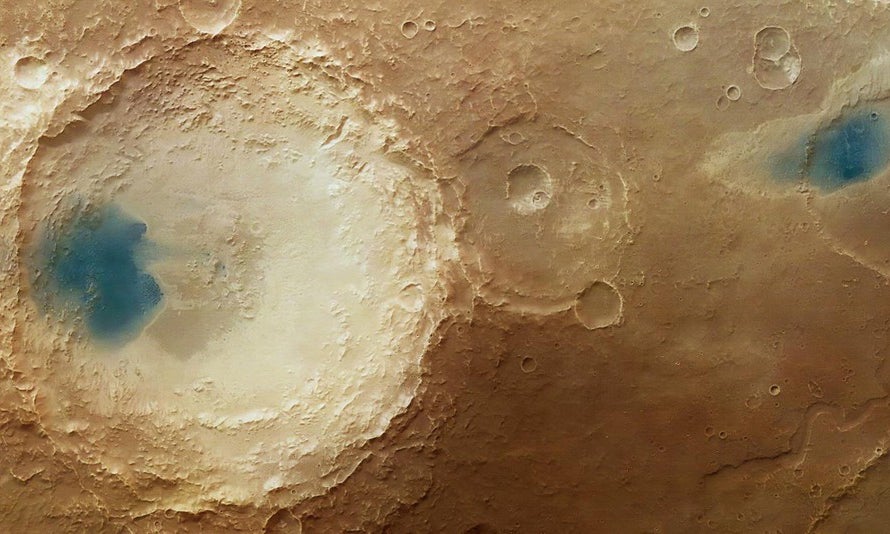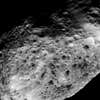Mini-Kermits
Scientists have discovered seven new species of teensy frogs in the Brazilian Atlantic Rainforest. The frogs are part of the genus Brachycephalus, and their bright colors likely indicate neurotoxins in their skin, researchers say. These adorable little guys are less than a centimeter long, and because they live in an isolated area, they are particularly vulnerable to environmental threats like climate change. This is probably not the last you’ve seen of them, though: “Such high success in uncovering new species might indicate that the total number of Brachycephalus is still underestimated,” the researchers wrote in the journal PeerJ.
Ice Slicers
To break through the ice-blocked route between Europe and Asia, Daewoo Shipbuilding and Marine Engineering is building the first icebreaker tankers to sail right through that icy course. You can see the ship’s three engines in this picture. These 15-megawatt motors hang below the hull and put out more than 60,000 horsepower, which is a third more powerful than the Titanic. The engines are also responsible for steering, since there’s no rudder, and they can rotate the boat 360 degrees.
Dust In The Wind
On Instagram, Universe Today posted this beautiful picture of Centaurus A, which is the fifth brightest galaxy in the sky. Located in the constellation Centaurus, its distinguishing feature is a dust lane that cuts through the middle. The galaxy also contains a huge black hole. Because of its bright center and giant dust lane, backyard astronomers can sometimes find Centaurus A with binoculars or even with the naked eye, in the right conditions.
Giving Rats A Hand
Researchers at the Massachusetts General Hospital have grown the blood vessels and muscles in a rat’s forearm. Scientists have already used this technique to regrow kidneys, livers, and hearts, but a forearm is the most complicated application so far, since many tissues are involved. For now, the researchers will need to work on growing bones, nerves, and other tissues. In the future, scientists hope they’ll be able to regenerate human limbs using this technology.
A Small-Minded Study
Researchers have created bitty brains in petri dishes, allowing them to test how a patient’s brain would respond to different drugs. Researchers created these tiny versions of patients’ cerebral cortices with stem cells from a patient’s skin. The petri dish brains aren’t as complex as real human brains, but scientists hope that in the future, this method can be used to tailor psychology medications to each patient.
Na Na Na Na Na Bat Bridge
By August, this bridge will stretch across a river in South Holland, satisfying the needs of both Dutch people and bats. Because so many bats cross this river to catch insects, this bat-friendly bridge will provide shelter for the hibernating and roosting animals. Designers from Next Architects will add extra mass and concrete, which will keep the temperature stable and create hidden entrances for roosting. If a bridge that keeps animals warm during the winter isn’t cool enough for you, then you should also note that the bridge will be called the Vlotwateringbrug.
Holey Hyperion
NASA’s Cassini snapped this image of Saturn’s potato-shaped moon Hyperion on May 31 from a distance of 21,000 miles–which is a close-up in cosmic perspective. Hyperion, Saturn’s largest moon, is an odd duck: the surface is deeply scarred and has many craters, and scientists attribute the moon’s shape to a violent collision. It has weak surface gravity and an unusually low density for such a large object–in fact, it’s only about half as dense as water.
Bright Buildings
This colorful map of Los Angeles is a part of Omar Ureta’s project called Built: LA. Ureta plotted almost every building in the city, and the color classification system shows when each structure was built. Blues indicate the buildings were constructed before the 1940s, purples indicate the 1950s and 60s, pinks indicate the 1970s through the 1990s, and finally orange indicates the 2000s. “There’s so much discussion going on right now in how L.A. is urbanizing, I wanted to create a tool that could contribute to the dialogue,” Ureta told Wired. “I’m excited that the map is actually making people ask more questions about their neighborhood, their city and the whole region.” Check out an interactive version of his map here.









